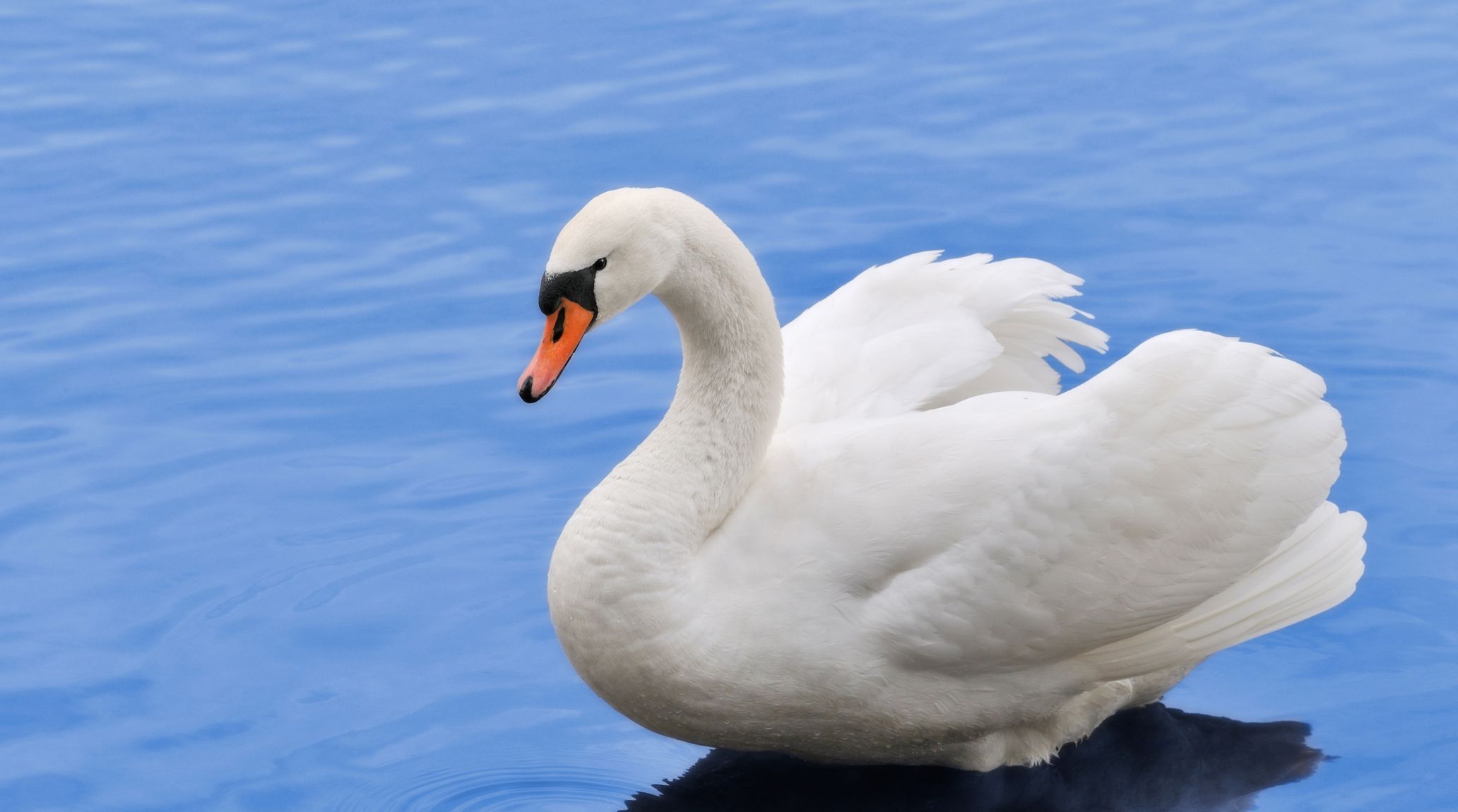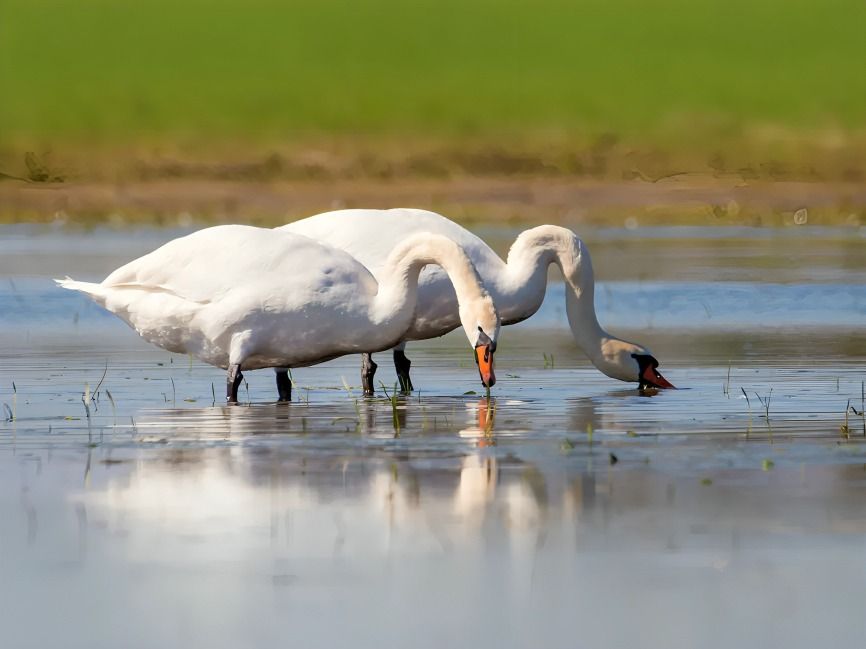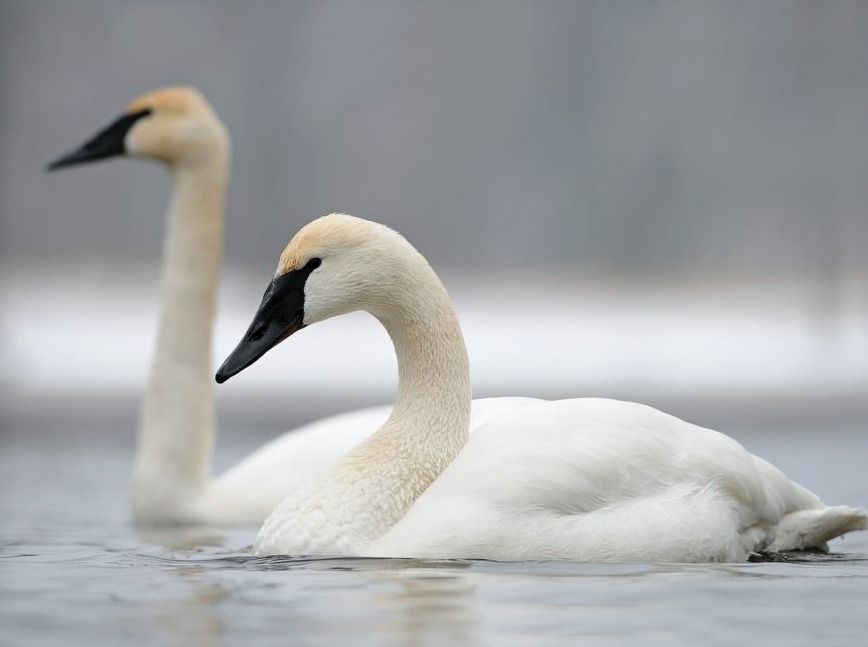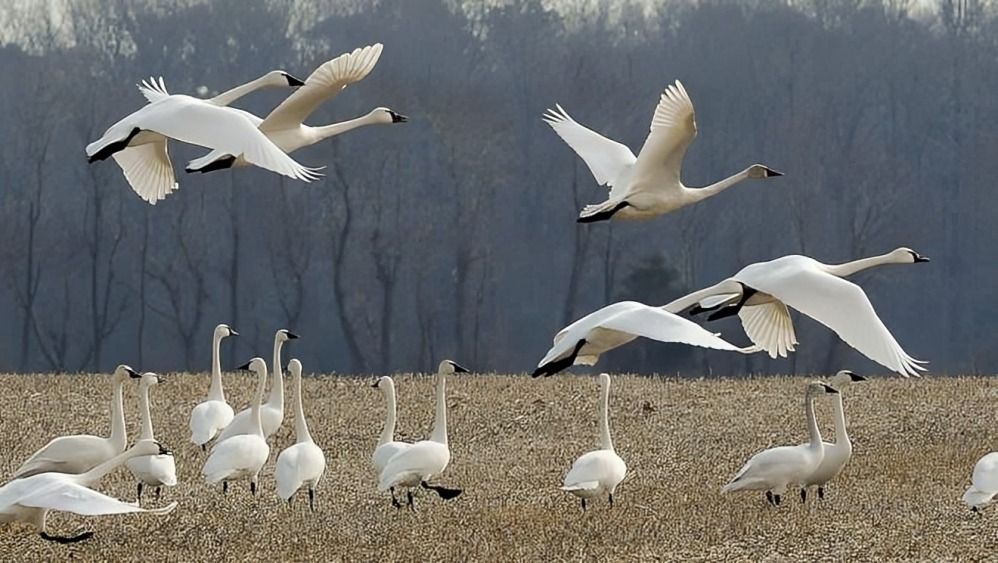
“
Swans, with their majestic presence and graceful movements, captivate the imagination of all who encounter them. These elegant birds are more than just symbols of beauty; they possess a wealth of fascinating traits and behaviors that make them truly remarkable in the avian world. From their intricate courtship rituals to their impressive migration journeys, swans are a testament to nature's wonder and resilience. Join us as we delve into 20 swan fun facts that will deepen your appreciation for these enchanting creatures.1
1
1
”
Swans have over 25,000 feathers on their bodies, which help them stay warm and buoyant in the water. Each feather is meticulously maintained through preening, ensuring it remains waterproof. 1

The swan's long neck isn't just for beauty; it helps them reach underwater vegetation for feeding. Their flexible necks can bend in an S-shape, allowing them to explore deeper waters.
Swans are monogamous birds, often mating for life. This bond strengthens over the years as they raise their young together, displaying a strong sense of loyalty and companionship. 2
Female swans, known as pens, take the lead in building nests. They use twigs, reeds, and feathers to create a sturdy structure near the water's edge, providing a haven for their eggs. 3
Swans are among the world's largest flying birds, known for their impressive wingspans that can reach up to 10 feet. Their large size and graceful flight make them a striking presence in the skies and on the water.4
There are several species of swans, including the mute swan, trumpeter swan, and tundra swan. Each species has unique characteristics and habitats, spanning across different regions of the world. 5

Swans are incredibly adept swimmers, gliding effortlessly across water surfaces. Their webbed feet act like paddles, propelling them forward while their strong wings help them maneuver gracefully.
The largest origami swan measured an impressive 4.69 meters in length and was crafted by Paul Frasco and Ryan Dong in New York City on 23 June 2023. This giant swan was showcased at the Sheraton Hotel during the 2023 OrigamiUSA Convention. 6
Some swan species undertake long migrations during seasonal changes. They travel thousands of miles to find suitable breeding grounds and warmer climates, showcasing their adaptability. 7
Swans primarily feed on aquatic plants, algae, and grasses found in freshwater lakes and ponds. Their long necks allow them to reach deep into water bodies to forage for food. 8
Swans typically have a nesting period rather than a pregnancy period since they lay eggs. After mating, the female swan lays eggs, usually between five to eight, which she incubates for about 34-41 days until they hatch. 9
Swans have a relatively long lifespan in the wild, often living up to 20 to 30 years or more. Their longevity is attributed to their careful grooming habits and protective behaviors. 10
During courtship, swans engage in elaborate displays of bobbing heads, synchronized swimming, and mutual preening. These rituals strengthen their bond and signal readiness to mate. 11
The mute swan, Denmark’s national bird, is celebrated for its elegance and beauty. Often seen as a symbol of purity, love, and loyalty, this majestic bird is cherished in Danish culture for its graceful presence and significance. 12

Swans are social birds that often gather in flocks, especially during migration or wintering periods. These gatherings provide them with safety in numbers and opportunities for social interactions.
When in flight, swans display a distinctive V-shaped formation, which helps them conserve energy during long-distance flights. This formation also allows them to maintain communication with flock members. 13
Swans are considered environmental indicators due to their sensitivity to water quality. Their presence or absence in an area can indicate the health of aquatic ecosystems. 14
Swans are well-adapted to cold climates, thanks to their thick layer of down feathers and oily coating on their outer feathers. This insulation helps them survive freezing temperatures. 15
Despite their size and strength, swans face threats from predators such as foxes, raccoons, and large birds of prey. Their defensive behaviors and vigilant nesting habits help mitigate these risks. 16
Conservation efforts are crucial for protecting swan populations, especially those facing habitat loss and human disturbances. Initiatives include habitat preservation, pollution control, and public awareness campaigns. 17


